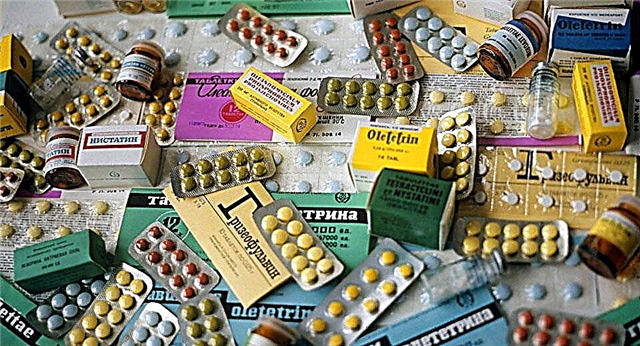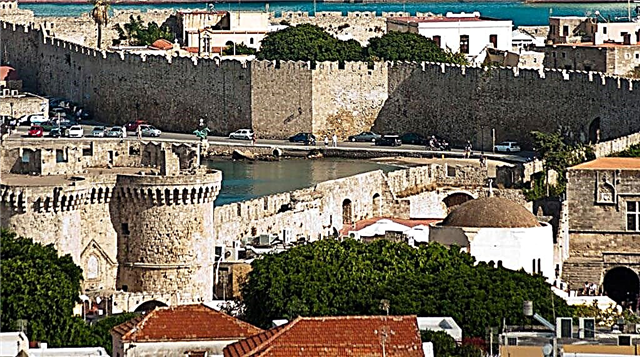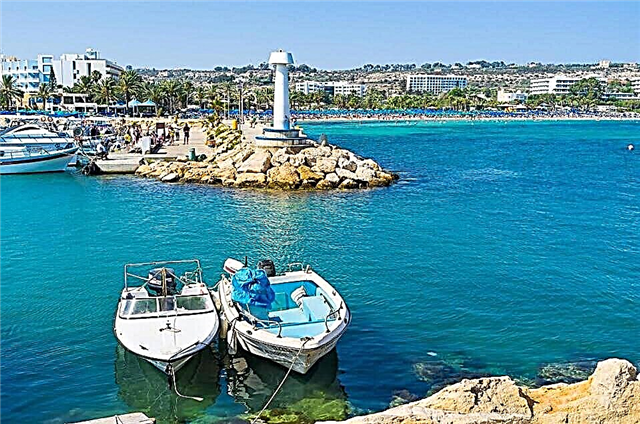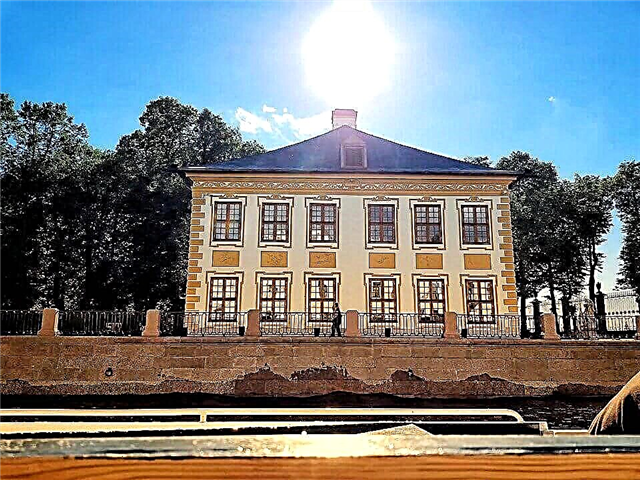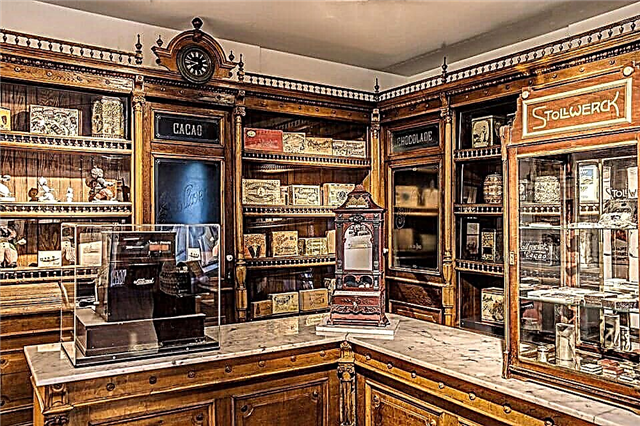Cologne is one of the largest cities in Germany. It was built on the Rhine River between Amsterdam and Frankfurt. The city with a well-developed economy and culture is annually visited by flows of tourists from different countries. Even those who know little about the city have certainly heard about the world-famous Cologne beer. The majestic temples of the city amaze with their beauty and diversity, and the University of Cologne is considered one of the best higher educational institutions in Germany. Holidays, festivals and events are often held in the city. People here are cheerful and cheerful. The city attracts tourists with its openness and ancient history. There are many interesting places here. We will tell you about the most interesting sights of Cologne.
Cologne Cathedral

The Cathedral of Saints Peter and Mary is known far beyond the city limits. It is the hallmark of the city. It is here that all tourists flock in the first place. The cathedral is striking in its beauty and magnificent architecture. The construction of the temple took about 530 years. Work stopped and started again. Architects, artists and craftsmen changed. Finally, the cathedral was erected.
At first glance, the temple impresses tourists with its size. This is a huge building in the Gothic style. Up close, the cathedral seems even larger. It is so large that it is even difficult to photograph it. The two towers of the majestic cathedral are carried high into the sky. The height of each of them is 157 meters. If you climb to the very top of the tower, you can see most of the city. All the splendor of the city will appear before your eyes, in full view.

Cologne Cathedral is an inimitable example of architecture. This is not just a temple, it is one of the largest Germanic museums. Its interior decoration is as luxurious as the exterior. Here you can see ancient and very valuable paintings and sculptures. The most beautiful stained glass windows, huge mosaics, ancient frescoes - all this can be viewed endlessly. Columns decorated with sculptures rise to chiseled vaults. The cathedral has its own treasury. You can visit it for a fee.
The building is located on Cathedral Square. It is always full of people until the very late hours. The temple is the main meeting place. All roads of the city will lead you to this structure. It is simply impossible not to see him. The spiers of the cathedral towers rise above the city. They are perfectly visible from afar.
Perfume museum

The perfume museum is also called the "House of Farin", in honor of the founder of the factory, Johann-Maria Farin. The perfume corporation, by the way, was the very first in the world. And the museum is now in his house. It all started with the fact that Farina managed to create one with an unusual scent from various floral fragrances. He named it "Cologne Water". And, after some time, the product has already gained great popularity.
However, not in Germany, but in France. Enterprising Frenchmen began to produce "Cologne Water" in their country in the form of cologne. Now in the House of Farin there is a factory and a perfume museum. Here you can see equipment for the production of perfume, pictures and photos, and even a description of the process itself. The museum has a large collection of cologne storage vessels.
Excursions to the Perfume Museums are held with a guide dressed in outfits from the times of the creation and operation of the factory. Here you can trace the entire history of perfume production over the years. Here you can appreciate the quality of the perfume and experience the aromas of the cologne. The smell is similar to a mixture of citrus and bergamot. No wonder Farina wrote that his perfume is a spring morning in Italy after the rain, filled with the aromas of lemons, grapefruits and his favorite herb.
You can buy souvenirs in the form of perfume and cologne. You can get there by metro to the station "Neumarkt" or by bus number 132.
Ludwig Museum

The Ludwig Museum focuses on modernity. His collections include paintings of the avant-garde movement. The gallery is large in size. It creates good competition for other modern museums at the world level. This place is worth a visit for those who are open to new information. The gallery is a modern building with 4 floors.
It is made in a rather bizarre form. The museum is located next to the Cologne Cathedral. Here you can see such trends in the work of artists as avant-garde, pop art, expressionism, surrealism. Most of the museum's collection is occupied by the huge collection of the Ludwig couple. In 1976, the couple donated about 350 works to the gallery. The new building of the museum was also erected on their initiative.
The gallery has very nice and helpful staff. They not only allow photography, but also offer to do it themselves. By the way, from the windows of the museum you can very well see a part of the Cologne Cathedral. The Museum of Contemporary Art is very distinctive.
Each master sees the main idea of the work in his own way. To capture the essence, it is advisable to use the services of an audio guide. You can get there by trams no. 5, 16, 18 to the Kolner Hauptbahnhof stop.
Chocolate Museum

The sweetest museum has been operating for over 20 years. It is close to the famous chocolate factory. The structure of the museum confuses tourists. It has absolutely nothing to do with chocolate. The building is made in the form of a huge ship. The museum is located on a small island. And its floor is made of a wall of glass and brick. And not from cookies and sweets, as children dream. Inside you can see large rounded staircases with galleries made of glass.
During the excursion, you will be introduced to the production technology of your favorite delicacy. The production process has been automated for a long time. All the work is done by huge machines. Hand-packed only in boxes and foil. In the museum you can see a collection of metal boxes and plates with the names of various chocolate companies. Dishes, paintings, old street vending machines and much more related to the theme of chocolate are part of the gallery's expositions.
The most favorite place for children is the chocolate fountain. Employees dip waffles into it and offer them to visitors. The structure is a large, about 3 meters tall, tree-like fountain. The chocolate flows out of it into a small tray. There are a lot of visitors with children here. They even organize special games and quizzes for them. Here you can even set your own recipe, according to which you will be immediately prepared a chocolate bar. The museum has a large chocolate shop.
The assortment is just huge. It features a variety of chocolate brands. You can get there by buses No. 106, 132, 133.
Town Hall Square

According to a long-term tradition, almost every major city in Germany has its main Town Hall and the square of the same name, on which it is located. Cologne is no exception, its Town Hall Square is one of the attractions. It is located in the center of the Old Town. The old Town Hall adorns the square.
The magnificent building has survived the war and restoration. Now it is an architectural monument. In the middle of the Town Hall there are halls with sculptures of famous people of Germany. There is a museum in the basement of the building, where you can see the life and life of ancient Cologne. The room is located underground at a depth of 10 meters. This gives the exhibition an even more ancient spirit. And the remains of an ancient settlement take visitors back to ancient times.
More and more celebrations and events take place on the Town Hall Square. Balls and receptions are held in the Town Hall building. However, this building is administrative, it is also called the "House of Citizens". People work here every day for the benefit of the city. You can get to the square by metro to the Dom / Hauptbahnhof and Heumarkt stations. Or by bus number 132.
Amusement Park "Fantasy Land"

The most favorite place not only for children, but also for adults. Fantasy Land is not just an amusement park, it is a fabulous city.The territory of the complex is divided into several parts, each with its own theme. Here these are the countries: America, Africa, Mexico, China. The park has water attractions for the smallest children. For those who are very wet, the dryer works. Here you will be dried with warm air currents. The area with attractions is an incredible adrenaline rush. And you get it already from the first glance at the incredibly large swing. A looped cable car and free fall from great heights beckon thrill-seekers to the park.
You can visit the "magic room", look at Chinese acrobats, meet "live" dolls and your favorite cartoon characters. You can get to the amusement park by train. The journey will take about 15 minutes. From April to November, Fantasyland is open from 9 am to 6 pm. From December to March - from 11 am to 6 pm.
St. Martin's Church

"Big Saint Martin" - this is how the inhabitants call this temple. Of the 12 Romanesque churches in the city, this one is recognized as the most beautiful. Big St. Martin is located next to Cologne Cathedral, on the banks of the Rhine. The church, like most other ancient churches, has experienced destruction, reconstruction, changes in appearance and interior decoration. Now the cathedral is a basilica surrounded by 4 towers. The best view of St. Martin's Church is from the Fischmarkt square. Tourists come here to photograph the entire cathedral against the backdrop of the calm waters of the Rhine. The altar of the temple was erected in the form of a clover leaf. The vault of the largest church hall is built in the form of a 10-gon. The high windows of the church are covered with beautiful stained glass windows with the faces of saints.
Part of the ancient Roman column in the Great St. Martin serves as a talisman. It is said here that she is a powerful defense of the temple from enemies. You can get to St. Martin's Church by metro to the Rathaus or Heumarkt stations. The doors of the temple are open to visitors:
- from 13 to 16 hours on Monday
- from 2 pm to 3 pm on Tuesday
- from 14:00 to 17:00 on Thursday
- from 9 am to 10 pm on Friday
- from 11 to 19 hours on Saturday.
If you decide to visit a church, do not forget that this is a holy place and the appearance to enter it must be appropriate. Avoid short skirts, shorts and plunging necklines.
Church of the Holy Apostles

The Church of the Holy Apostles is the third highest of the Romanesque churches in Cologne. It is located in the Old Town at the Neumarkt square. The church looks like a basilica, consisting of three main naves and two naves on the sides. Two large 67-meter towers go up majestically into the sky. They are located on the east and west sides of the cathedral. Getting into the church from the rather lively Neumarkt square, you find yourself in a quiet, large and very beautiful temple. The interior decoration of the Cathedral of the Holy Apostles has been restored more than once after wars and destruction.
Here you can admire the amazing blue-gray frescoes. They depict Saint John. The frescoes are unusually delicate and beautiful. Luxurious colored stained-glass windows adorn the windows of the holy place. The church is decorated with a large lantern made in the form of a clover. A huge organ, a very beautiful sculpture of the 12 apostles, a stunning baptismal font - all this can be seen in the church. You can get to the church by tram numbers 1, 7, 9, 11 and 14 to the “Neumarkt” stop. Take bus number 134 and 146 or metro to the same station. The temple is open to tourists from 10 am to 12 pm and from 3 pm to 5 pm on all days except Tuesday. Free admission. Taking pictures is allowed.
Ethnological Museum

The Rautenstrauch-Jost Ethnological Museum is an unusual and interesting place. It is one of the five largest German ethnological museums. Here visitors are invited to see thematic exhibitions. The main directions are the awareness of the world and its constructions. The museums display old photographs, ethnographic artifacts, rare magazines and ancient monographs. All this is carefully collected in numerous expositions. Museum visitors can learn about life and death, about rituals and customs. On the essence of men and women, and man in general. Here they reveal the problems and mistakes of generations that have haunted people for hundreds of years.
A separate exhibition is dedicated to children. Here, more attention is focused on the child, his feelings and problems. There are also temporary exhibitions in the museum. All of them also reveal the problems of man and society. The museum is quite informative for those who want and love to listen. You can get to the museum by metro to the station "Neumarkt". It is open from 10 am to 6 pm. The main influx of people here is from 12 to 15 hours. If you want to spend time in museums quietly and calmly, go to it in the morning.
Fountain "Curious Woman" Heinzelmennchen

Not far from the Cologne Cathedral there is a “monument to female curiosity”. The Curious Woman Fountain Heinzelmennchen is the most famous fountain in the city. This cute and funny sculpture is one of a kind. The monument is designed as a large fountain. In the center is a woman with a lantern in her hands, and at some distance the gnomes lying on the stairs. The fountain was created on the basis of a poem by the German poet by sculptors, father and son Renard.
According to legend, a curious woman really wanted to see the Cologne gnomes who helped the inhabitants of the city at night. And she succeeded, the woman scattered dry peas on the stairs so that the gnomes would slip and fall. And when this happened, the hostess immediately appeared, holding the lantern in her hand. The night workers took offense and were forced to leave the city. The fountain is located in a cozy corner of the city. Around him are wonderful bas-reliefs depicting other heroes of the poem. All this is surrounded by greenery and flower beds.
There are always a lot of tourists near the monument. They are looking for a funny fountain with great interest and are photographed against its background.
Zoo

The zoo is located in the north of the city, not far from the botanical garden. It is one of the oldest zoos in Germany. The animal park occupies a large area. It's clean and tidy. Animals live here in cages and aviaries. They are looked after and fed. Here you can see dolphins, camels, elephants, baboons, a wide variety of birds. Animals imposingly bask in the sun in good weather, and do not pay attention to visitors. What can not be said about nimble monkeys who are always glad to guests. They live in a specially built "Jungle House".
There are also exotic plants on the territory of the zoo. They are kept indoors to maintain the climate they need. On the territory you can see exhibitions with stuffed animals. And there are also ancient people in mammoth skins and with prey. The zoo oceanarium makes a stunning impression. As if you have visited the depths of the sea and saw a bizarre sea world. Colorful fish, molluscs and reptiles are no worse than huge animals.
You can get to the zoo by tram number 18 or bus number 140 to the stop "Zoo Flora". You can get from the Cologne Cathedral by a special bus "Zooexpress".
Cologne town hall

The oldest town hall in all of Germany is located in the historic center between the Old Market and the Town Hall Square. It is only 300 meters away from another popular city attraction, the Cologne Cathedral. The building of the city administration was erected in several stages, and the process stretched over a long period from 1330 to 1573. The skilful combination of Gothic and Baroque gave the building a majestic and picturesque look that attracts tourists.
Of particular interest to travelers is the wood-carved physiognomy known as Platz-Jabbek. She is located on the facade of the building and with each beat of the town hall clock she opens her mouth and sticks out her tongue.
Another "highlight" of the town hall is the graceful tower, decorated with figures of famous townspeople.
The Cologne City Hall, located at Rathausplatz 2, is open on weekdays from 9 am to 6 pm.
Palace Augustusburg

One of the earliest examples of German Rococo, the Augustusburg Palace was erected at the beginning of the 18th century at the direction of Augustus of Bavaria, Archbishop and Elector Clemens. Augustusburg - in the past the pompous residence of the princes-archbishops - is located in the garden suburb of the city of Brühl not far from the city. In the post-war years, the building was used for holding official receptions at the state level and other political meetings.
Today it is a popular tourist attraction, known not only for its luxurious architecture, but also for its status as a UNESCO World Heritage Site. For tourists in Augustusburg, educational excursions are organized with an examination of ancient exhibits, and in the adjacent parks - masterpieces of landscape design - there are many scenic routes and concert venues.
Visitors are welcome here every day, with the exception of the only day off - Monday. The palace complex is open from 9:00 to 12:00 and from 13:30 to 16:00, and on weekends and holidays - from 10:00 to 17:00.
The White house

The first mention of this medieval castle dates back to 1378, and the monastery of St. Panteleimon is considered the founder. In those days, the castle served as a defensive fortification and a summer residence of the Benedictine abbots. Snow-white walls, old masonry, many eclectic elements of the building's decor, Gothic turrets and a picturesque man-made pond surrounding the Weisshaus create a surprisingly harmonious combination, complemented by the beauty of the surrounding nature.
The area of the complex is 743 square meters. The castle is connected with a huge shady park by two colorful arched bridges. Today, the White House, located in the Lindenthal district at 201 Luxemburger Strasse, is privately owned. To get there, travelers can take the subway tram in the direction of Bonn. The final stop is Arnulf Strasse.
Roman-Germanic Museum

In the ranking of the most popular and frequently visited attractions, the Roman-Germanic Museum confidently occupies a leading position due to the fact that its archaeological collection includes exhibits from the Paleolithic to the early Middle Ages. The number of museum pieces reaches three million, including the Mosaics of Dionysus, a round tower and the surviving remains of the Roman city wall, a 15-meter tombstone of Pablicius and many others.
Some of the museum halls are set aside for displaying the collection of colored and ordinary glass, tableware, household items, Roman jewelry and weapons of various peoples. The Romano-Germanic Museum, located at Roncalliplatz 4, is open to the public every day from Tuesday to Sunday from 10 am to 5 pm. Every first Thursday of the month, the museum begins its work at 10 am and ends at 10 pm.
Wallraf-Richartz Museum

Founded back in 1861, the Wallraf-Richartz Museum is now housed in a modern building, built in 2001 near the Town Hall Square. As one of the largest art galleries in Germany, this museum complex contains a huge collection of paintings painted over seven centuries. The museum collection contains paintings of the Cologne school of painting and unique graphic works.
Due to the fact that Cologne, to a lesser extent than other medieval cities, experienced the destructive force of fires and other external influences, it managed to preserve the vast collection of medieval painting and icon painting, which is stored in the Walraf-Richartz Museum. The true pride of the collection here is the "Madonna in the Rose Gazebo" - the pinnacle of the famous Stefan Lochner's creativity.
Tourists can explore this iconic landmark at 39 Martinstrasse on any day except Monday. Every first and third Thursday of the month the museum is open from 10 am to 10 pm. On other days - from 10 am to 6 pm.
Schnütgen Museum

The amazing history of the emergence of this museum has become one of the reasons for its popularity. Alexander Schnütgen collected medieval church artifacts for several decades at the end of the 19th century, and in 1906 donated his unique collection to his hometown. The only condition of the collector was the creation of a museum, accessible to all comers.
The locations of the new museum changed several times, but in 1956 it firmly established itself in the Romanesque Basilica of St. Cecilia at Cacilienstrasse, 29-33, which itself is an important architectural landmark of the city. Schnütgen's collection of exhibits includes colorful stained-glass windows, antique tapestries, church utensils made of ivory and precious metals, solemn vestments, stone and wooden statues.
You can visit from Tuesday to Sunday from 10 to 20 hours.
Ulrepfort

The first mention of the Ulrepfort fortress dates back to 1245, and the estimated period of its foundation, according to scientists, is 1230. For such a long, eventful life, the fort has turned from a defensive city fortification into one of the most recognizable sights.
According to the most reasonable version, the name of the fortress is translated as "pottery production". It was this craft that actively developed here until the 19th century. In different eras, a mill, merchant households, and wine cellars were located inside the fortress. Today Ulrepfort, located in the south of the historic part, can be found between Sachsenring, Ulrichgasse and Kartäuserwall streets.
House of cologne "4711"

"Cologne", translated from French, literally means "Cologne water". Connoisseurs of exquisite aromas all over the world know about this elite perfumery, produced in House 4711. Today, at least 60 countries export the products of this factory. “Cologne water” in the Cologne House has been produced for several centuries according to a special recipe, the components of which are still kept secret.
There is a shop at the factory where you can buy any Eau De Cologne 4711 from a huge collection of modern fragrances. In addition to perfume, they sell perfumed cosmetics, shower gels and much more. On the second floor there is a small museum with a collection of thematic exhibits that are directly related to the history of the creation and development of the brand.
House 4711 is open Monday through Friday from half past nine in the morning until half past seven in the evening. On Saturdays, the working day is half an hour shorter, and on Sunday, it is a day off.
Gürzenich

The impressive size and eye-catching Gothic décor of this building have made it a center of attraction for numerous tourists. Such a spacious hall for those times was erected in the period from 1441 to 1452, and its first owners were the noblemen Gürzenich. In the era of the Third Reich, public and political meetings were held here, Hitler and other historical figures promoted their ideas.
During the Second World War, the building was destroyed and the luxurious interiors were lost. Only massive walls survived. After the war, the building was restored, and today it is a popular exhibition and concert complex, where a unique old atmosphere still reigns. Here, at Messeplatz 1, eminent artists from different countries give performances, organ music concerts and all kinds of exhibitions are organized.
Hahnentorburg gate

The Hanentorburg Gate was an important part of the old defensive city wall. Through them during the Middle Ages lay the way to Aachen and Julich. They are located in the southern part of the Old Town near Rudolfplatz on Hahnenstraße. According to historians, the gate was erected at the beginning of the 13th century and served as a vivid proof of the fortification power of the Cologne fortification.
In later times, a prison was located here, then the Cologne horse tram. At the end of the 19th century, the Hanentorburg Gate was restored, and a history museum was located within its stone walls.During the Second World War, the gate underwent significant damage, but after restoration it was used as an exhibition art hall. And since 1988, the Carnival guard of honor has been located in the Hanentorburg building.
Gate of Saint Severin

The Gate of Saint Severin, part of the medieval city wall, is one of the surviving historical sites. They are located in the south of the Old Town at the intersection of Severinswall, Severinstraße and Kartäuserwall near Chlodwigplatz. In the past, this gate was the main route connecting Cologne and Bonn. The construction of the gate dates back to the 13th century. In addition to being one of the main entrances to the city, the St. Severin Gate served as a meeting place for guests of honor who arrived on a visit.
After 1881, a museum of natural history began to be deployed at the gate, which was transformed a little later into a museum of hygiene. And since 1979, a community center has settled here, where private events of various formats are held. Despite the long historical path, the gates have retained their appearance almost intact and still serve as a reminder to contemporaries of the importance and grandeur of the city.
Eigelstein gate

Located at the intersection of Lübeckerstraße, Eigelstein and Greesbergstraße, the Eigelstein Gate served as the northern entrance in the past and was an essential element of the city's fortification system. The researchers believe that the gate was erected between 1228 and 1248 as the main entrance connecting the city with Noyce. In 1804, Napoleon entered the city through them, accompanied by his wife.
By decision of the city authorities, the Eigelstein Gate was preserved after the demolition of the fortress wall, and at the end of the 19th century the architect Stubben carried out a complex of works on their reconstruction, after which a natural history museum was founded here, and even later - a branch of the historical museum, the main headquarters of which was located at the Hanentorburg gate. ... The gate was used as a location for exhibition expositions until 1963, after which the purpose of the object was regularly changed. Today it is the most important part of the city's historical heritage.
Bayenturm Tower

The two-storey octagonal tower Bayenturm with a crenellated frame was built as part of a single fortress wall in 1220. Towering over the Rhine, today it is one of the most popular historical sites in the Old Town. The 35-meter Bayenturm can be found at the Rheinauhafen promenade between Bayenstraße and Agrippinawerft. Its appearance is fully consistent with the one that it had at the time of its construction.
A major reconstruction of the Bayenturm tower was carried out by Stübenn at the end of the 19th century, and then it was restored in 1987 after serious damage during the Second World War, while the drawings of the architect Stübenn were used for the reconstruction work.
Church of St. Panteleimon

The Romanesque Catholic Church of Saints Panteleimon, Cosmas and Damian is located on a hill in the southern part of the Old Town. The first mention of it dates back to 866 and is associated with the name of Archbishop Gunther, in whose documents it was said about the "church on the hill". In 955, on the basis of the existing church, a monastery was opened, the founder of which was Archbishop Bruno I the Great.
Modern travelers can find this three-aisled basilica with one 36-meter and two 42-meter towers within the boundaries of the district, delineated by the streets of Rothgerberbach, Am Weidenbach, Pantaleonstraße, Waisenhausgasse and Am Pantaleonsberg. Particles of the relics of Nicholas the Wonderworker, Bruno I the Great and the Great Martyr Panteleimon are kept in the church. For parishioners, Sunday and weekday fairs are held here, conversations with priests and church classes are held, Eucharistic worship of St. Panteleimon is held.
Cable car

To enjoy the picturesque panoramas, to see the Rhine and Cologne Cathedral from a bird's eye view and to get an unforgettable experience from the excursion, tourists should visit the cable car, the station of which is located near the city zoo on Riehler Straße, 180.
At the time of its opening in 1957, this cable car was considered the first and only in the country, which inevitably attracted the attention of residents of other German cities and foreign tourists. The Cologne cable car was the only one in Germany until 2011, when an aerial tram appeared in Koblenz.
The townspeople are proud of their cable car not only for its historical status, but also for its environmental friendliness. In addition, this type of transport is recognized as the safest. You can ride the cable car every day from 10 am to 6 pm during the warm season, which is considered the season from April to October.
Hohenzollern bridge

The powerful arched bridge thrown across the Rhine River at a distance of 688.5 kilometers from its source is a real business card. Its huge steel structures support the railway and pedestrian / bike paths connecting Cologne and Cologne-Messe / Deutz train stations. As the most important railway junction in Europe, this 409-meter bridge passes over 1,200 trains daily.
Its designer and architect is Franz Schwechten, and the grand opening took place in May 1911. Today, the Hohenzollern Bridge is no less popular with travelers than the Cologne Cathedral and the remains of the fortress walls. It is printed on postcards, and souvenirs depicting the bridge are sold out by tourists in the blink of an eye.
Botanical Garden "Flora"

The botanical garden was created one of the first in Europe. The date of its foundation is considered to be 1864, when Peter Lenne (an architect from Prussia) began landscaping a new park in the northern part of the city. The old park was demolished for the sake of the construction of the railway station, and the city needed a picturesque place for walking. The botanical garden itself was founded in 1914. The northern part of the Flora Park was chosen as a place for it.
Today there are thickets of ferns and flowering shrubs, heather meadow and exotic plants, mountain grasses and Mediterranean trees. Plants from all over the world are complemented by statues, sculptures, fountains and resting places. The park also houses a picturesque lake, covered greenhouses, artificial waterfalls and a café for visitors.
Admission is free, as is all the garden areas and the Subtropical House. Tickets only need to be purchased for some greenhouses. The Botanical Garden is open from 8 am to sunset (but no later than 9 pm). The subtropical house welcomes guests from 10 am to 4 pm (in winter) or 6 pm (in summer).
Colonius TV Tower
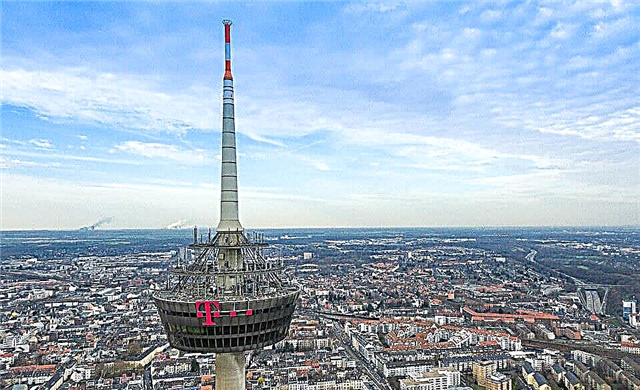
The television and radio broadcasting tower reaches a height of 266 meters (along the spire) and is considered the tallest object in the city and the seventh in the list of the tallest structures in Germany. Its construction took place in 1978-1981, and Erwin Heinle became the architect. The tower got its unusual name for the German speech in honor of its city, pronounced in the Roman manner “Colonia Claudia Ara Agrippinensium”.
The Colonius Tower is located on nnere Kanalstraße, the route of which follows the curves of the former city wall.
Until 1994, the observation deck and restaurant of the TV tower were available for tourist visits, but after an accident during the New Year's celebration, the city authorities decided to prohibit entry for unauthorized persons. Now you can only admire the TV tower from afar, but what you see is worth it.
Roman tower

The round, with a jagged edging Roman tower was erected in the II-III centuries, during the colonial past of the city, when it was considered a remote fiefdom of influential Rome. The walls of the tower are made of sandstone, limestone and trachyte and decorated with authentic mosaic masonry.
After gaining independence, the city was surrounded by a fortified wall, and the defensive Roman tower turned into the Catholic monastery of St. Clara, and then into a residential building. The Roman tower acquired the status of a historical monument at the end of the 19th century. A large-scale restoration in 1898-1899 gave the building a neo-Gothic appearance and a recognizable jagged profile.
Today the tower is privately owned. You can admire it by taking a ten-minute walk west of Cologne Cathedral.




